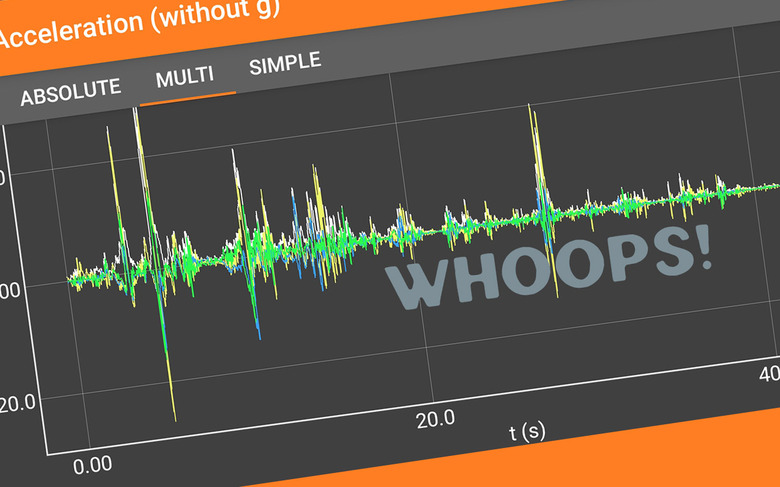This Phone Test Can Tell You You're Drunk
In a study published this week, researchers showed results in their exploration of smartphone accelerometers used to sense alcohol impairment in users. In "Preliminary Study Using Smartphone Accelerometers to Sense Gait Impairments Due to Alcohol Intoxication," researchers led by Brian Suffoletto, M.D., showed how a sensor in your smartphone could show the difference between the movements of a sober person and the movements of someone who's had a bit too much alcohol for their own good. The keys appeared to be by the mean signal amplitude (with a phone's accelerometer) and the variance of the signal in the x-axis – in other words, the amount of SWAY one has in their walk.
What you can do
To do this test, you'll need the app available at Phyphox. That's an app for Android and iPhone (iOS). Once the app is installed, you'll want to open the app and collect data with the "Acceleration (without g)" "Raw Sensors" feature.

To do a very BASIC test, all you'll have to do is open the app, start up the acceleration test, and do the walk. Here's what you could do with a friend:
1. Download Phyphox to a phone.
2. Attach phone to a belt.
3. Start Acceleration test.
4. Walk 10 steps in a straight line, then walk back.
5. Stop test.
Repeat this test several times over the course of a night, and in the morning, compare the results. You'll probably find that the lines are a whole lot more jagged the more the test subject has imbibed over the course of the night.
What they did
In the study, a whole lot of math is involved in deciding what meant what for each individual study participant. Each individual was asked to walk 10 steps in a straight light, turn, and walk 10 steps back, multiple times over the course of several hours while smartphones, recording accelerometer data at a rate of 100Hz, were placed on the lumbar region (on their belt).
Study basics:
1. Attach phone with Phyphox to belt of study subject, start Acceleration recorder.
2. Study subject walks 10 steps in a straight line, turns, walks 10 steps in a straight line. Stop Acceleration recorder.
3. Each hour (for up to 7 hours after drinking a weight-based dose of alcohol to reach .20% blood alcohol concentration (BrAC).)
Per this study's conclusion, evidence was indeed found that gain-related features measured by smartphone accelerometer sensors could potentially detect signs of alcohol intoxication. "Future research should determine whether these findings replicate in situ."
Findings do not show the absolute intoxication of an individual, only the correlation of intoxication compared to the relative gate sway of said individual. If an individual wanted to trick an accelerometer-based intoxication test, it's likely they'd be able to do so: wobbling around when your sober will probably trick the test, as it were. If you're drunk, though, walking without the "sway" will likely be more of a challenge.
For more information on the study, take a peek at Preliminary Study Using Smartphone Accelerometers to Sense Gait Impairments Due to Alcohol Intoxication as published online on August 18, 2020. Published with code DOI:10.15288/jsad.2020.81.505, this study was authored by Brian Suffoletto , M.D., (now with the Department of Emergency Medicine, Stanford University), et. al. with the Journal of Studies on Alcohol and Drugs.
